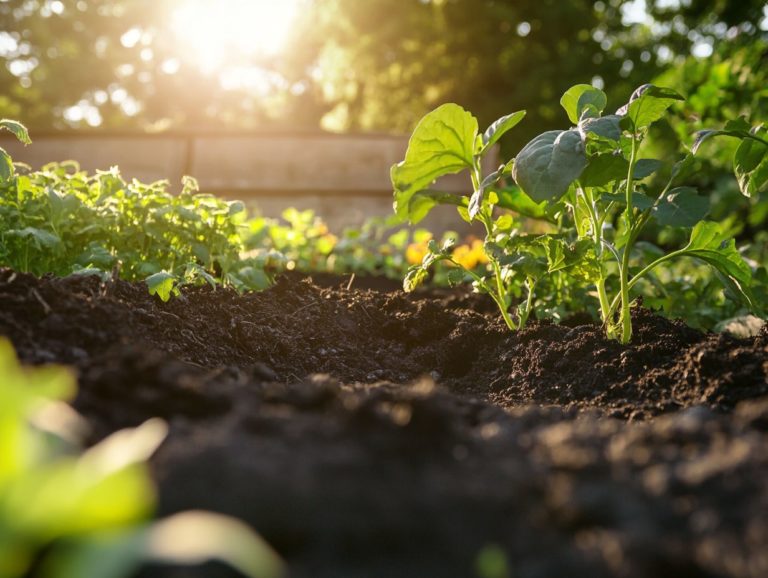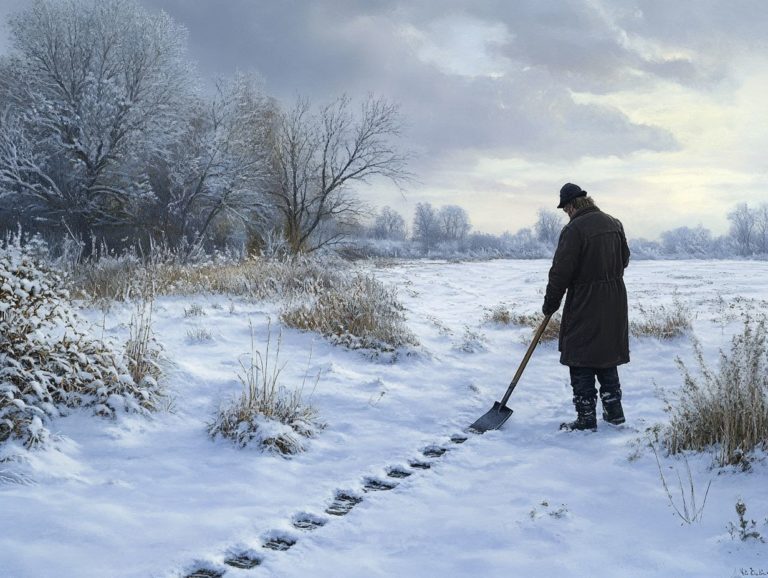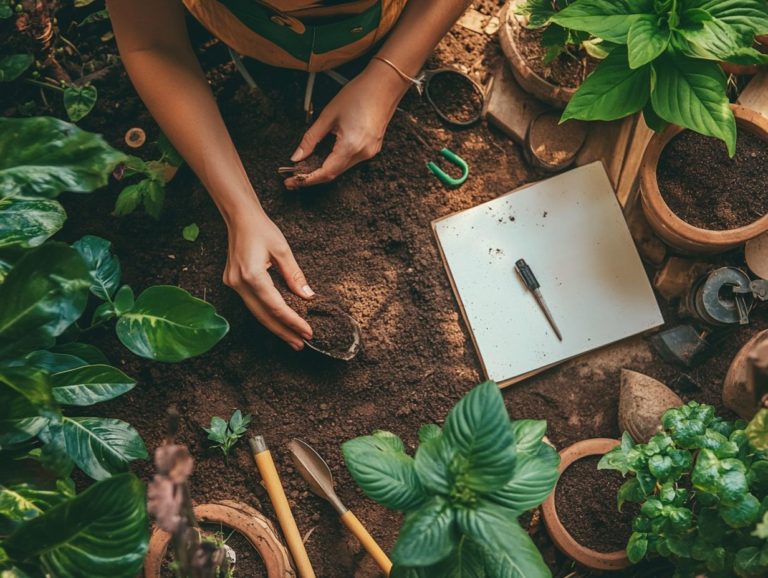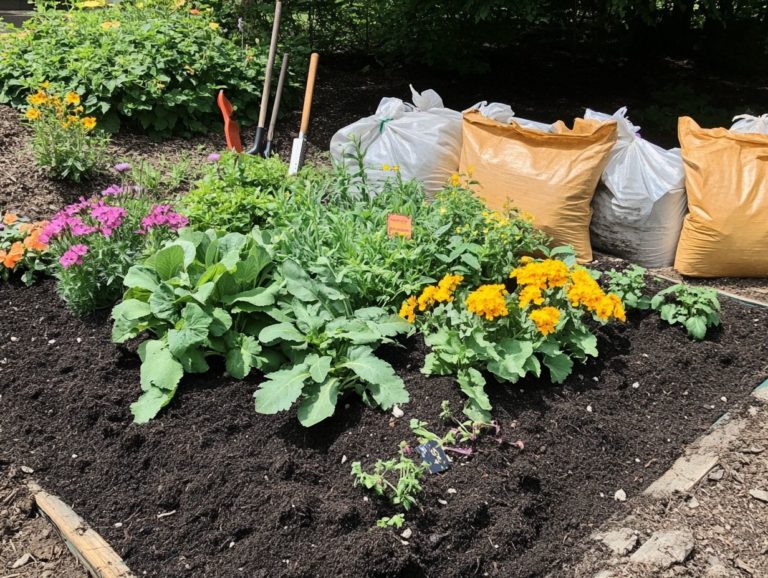5 Soil Myths Every Cold-Climate Gardener Should Know
Understanding soil health is essential for any gardener, particularly those navigating the challenges of cold climates. However, many widely accepted beliefs can often mislead you and impede your gardening success.
This article aims to dismantle five common soil myths from the supposed necessity of fertilizers to the perceived difficulties of managing sandy and clay soils. It delves into what genuinely influences soil health and presents effective practices to sustain and enhance soil quality without becoming overly reliant on fertilizers.
Get ready to transform your gardening skills today!
Contents
- Key Takeaways:
- 1. Myth: Fertilizer is Always Necessary for Healthy Soil
- 2. Myth: Sandy Soil is Always Bad for Gardening
- 3. Myth: Clay Soil is Always Difficult to Work With
- 4. Myth: Adding Organic Matter is the Only Way to Improve Soil
- 5. Myth: Soil pH is the Most Important Factor for Plant Growth
- What Factors Actually Affect Soil Health?
- Frequently Asked Questions
- What are the top 5 soil myths that every cold-climate gardener should know?
- Why is it important for cold-climate gardeners to know these soil myths?
- What are some other common myths about soil in cold climates?
- How can I improve my soil in a cold climate?
- Are there any specific plants that do well in cold climates?
- How often should I test my soil in a cold climate?
Key Takeaways:
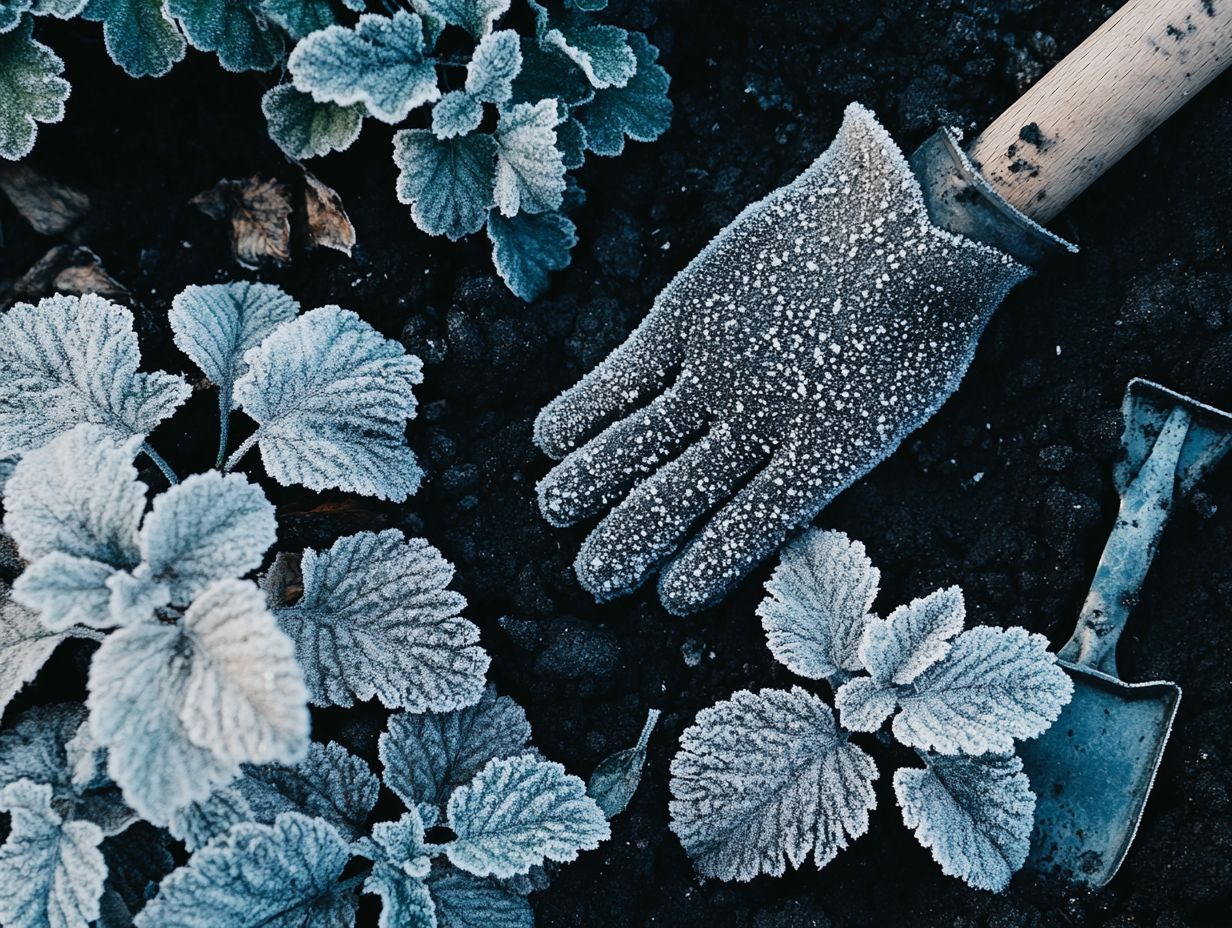
- Not all types of soil need fertilizer to be healthy. Test your soil and only add nutrients when necessary.
- Sandy soil can be beneficial for certain plants and can be improved by adding organic matter.
- Clay soil can be worked with effectively by avoiding compaction and practicing proper drainage techniques.
1. Myth: Fertilizer is Always Necessary for Healthy Soil
You might have heard the myth that fertilizer is always essential for maintaining healthy soil. This oversimplification neglects the various factors that contribute to soil health, which are crucial for thriving plants and crops. Many gardeners mistakenly assume that commercial fertilizers are the only path to nourishing the soil, leading them to ignore common mistakes in cold-climate gardening. They often overlook the fact that organic matter, proper water management, and other thoughtful agricultural practices can significantly enhance soil quality without relying solely on synthetic options.
By integrating compost into your gardening routine, you can cultivate a vibrant ecosystem. This not only improves soil structure but also nurtures beneficial microorganisms. Understanding soil health goes beyond merely adding amendments; it requires recognizing the intricate relationships between plants, nutrients, and microbial life.
Employing alternative practices like companion planting enables you to create diverse plant communities. These communities naturally reduce pest occurrences and plant diseases, while boosting overall plant vitality. These eco-friendly methods promote sustainable gardening and lead to a more resilient landscape, demonstrating that health and productivity can indeed thrive without heavily relying on chemical fertilizers.
2. Myth: Sandy Soil is Always Bad for Gardening
It’s a common misconception that sandy soil is always a gardening foe. In reality, it can offer unique advantages, such as excellent drainage and warm soil temperatures that promote rapid plant growth, particularly for beloved crops like tomatoes and blueberries. To maximize these benefits, consider the importance of soil testing in cold-climate gardening.
This texture allows roots to easily access oxygen, promoting healthier growth. Sandy soil readily absorbs sunlight, aiding in heat retention, making it ideal for heat-loving plants.
However, since sandy soil tends to drain moisture quickly, it s crucial to enhance its ability to hold nutrients. By incorporating compost and organic matter, you can significantly improve moisture retention while enriching the nutrient profile.
Over time, these amendments will boost soil fertility and create a balanced environment where your plants can truly thrive. This reveals the often-overlooked potential of sandy soil in gardening.
3. Myth: Clay Soil is Always Difficult to Work With
Many gardeners often assume that clay soil is a challenge to manage. However, this misconception overlooks the substantial benefits that clay offers. Its remarkable capacity to retain water and its nutrient-rich nature make it an excellent foundation for cultivating a diverse range of plants and crops.
The dense structure of clay soil allows it to hold moisture efficiently. This transforms it into a valuable asset, especially in drier climates where water conservation is paramount. The naturally occurring nutrients within clay foster robust plant growth. To fully harness these benefits, consider employing techniques to enhance the soil’s texture and drainage.
For example, integrating organic matter like compost elevates nutrient levels and improves aeration. Mixing in sand can help alleviate the compact nature of clay, resulting in a more workable and productive garden bed.
Embrace the potential of clay soil, and you may find it to be a hidden gem in your gardening endeavors.
Ready to improve your gardening today? Test your soil and try out some of these suggested methods!
4. Myth: Adding Organic Matter is the Only Way to Improve Soil
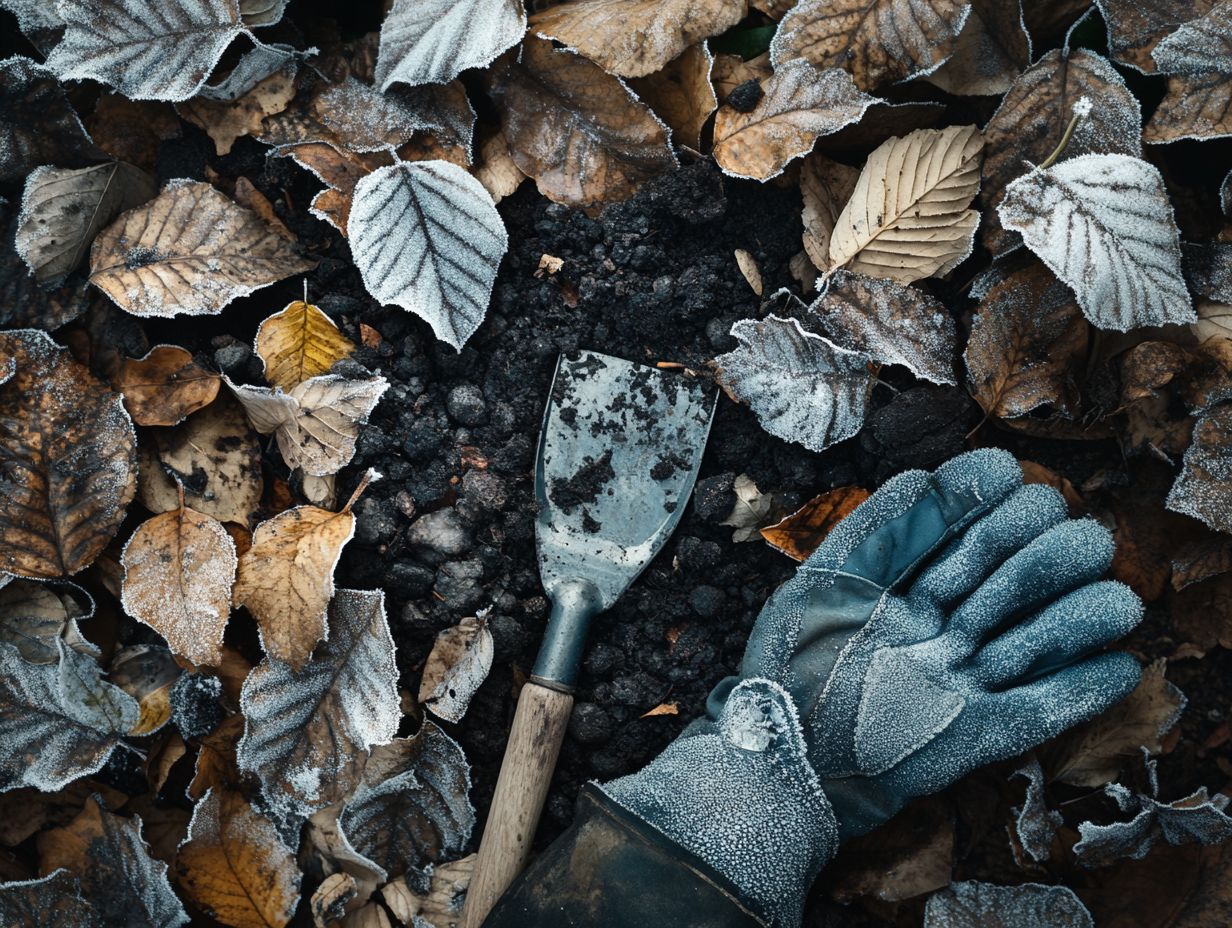
The idea that adding organic matter is the only way to boost soil health is a common myth among gardeners. In reality, avoiding common mistakes in cold-climate gardening can reveal several techniques that enhance soil quality.
Adjusting pH levels and incorporating various soil amendments (materials added to soil to improve its quality) are effective methods.
Consider the benefits of using eggshells, which are a fantastic source of calcium, or acorns, which can enrich your soil with valuable organic matter. Not only do these methods support plant vitality, but they also foster a thriving ecosystem within your garden beds.
Before you make any changes, it’s essential to conduct soil testing. This step provides you with valuable insights into your soil’s specific needs, such as nutrient deficiencies or pH imbalances. With this knowledge in hand, you can make informed decisions about the best amendments and practices to promote robust growth and sustainable gardening.
5. Myth: Soil pH is the Most Important Factor for Plant Growth
While soil pH is indeed a vital factor influencing plant growth, believing it to be the sole element of importance overlooks the intricate interplay of various components, such as soil texture, nutrient availability, and plant roots. All these aspects work in harmony to determine the health and productivity of your crops and gardens.
The soil’s pH level significantly impacts water retention capabilities; more acidic or alkaline conditions can either enhance or hinder moisture absorption. Nutrient availability is closely linked to pH, as certain nutrients may become more accessible or, conversely, less so, depending on whether your soil leans toward acidity or alkalinity.
For gardening enthusiasts eager to cultivate specific plants like rhododendrons and azaleas, testing the soil pH using a reliable kit is essential. Aim for that sweet acidic range of around 5.0 to 6.0.
To effectively adjust pH levels, consider using organic amendments pine needles or sulfur can help lower pH, while lime can raise it. This ensures you create optimal growing conditions tailored specifically for those exquisite flowering plants.
What Factors Actually Affect Soil Health?
Soil health is shaped by a variety of factors that extend far beyond common myths. You’ll find that nutrient content, soil structure, moisture levels, and the presence of organic matter all play critical roles in determining the vitality of your soil and its ability to support a diverse array of plants. Understanding the role of soil in sustainable cold-climate gardening is essential for maximizing this potential.
Temperature is another key player; warmer climates can speed up biochemical processes, impacting microbial life and nutrient cycling significantly. Water availability is equally vital. Adequate moisture is essential for nurturing robust root systems and supporting beneficial organisms, while excessive water can create oxygen-depleted conditions.
Organic matter enriches your soil, enhancing its structure and fostering a balanced ecosystem by providing a habitat for microorganisms. Ready to boost your soil health? Here are some proven tips!
- Rotate crops to keep nutrients flowing.
- Add compost to supercharge organic content.
- Regularly monitor moisture to hit the perfect balance.
Make testing soil pH a priority! This simple step will guide you in creating the best environment for your plants to thrive.
How Can You Tell If Your Soil is Healthy?
Determining the health of your soil involves several key indicators, such as its texture, moisture levels, and nutrient content. You can easily assess these factors through straightforward testing methods and by observing plant growth and any signs of disease.
For example, a thriving ecosystem often reveals itself through the lively activity of earthworms. Their presence aerates the soil and enhances nutrient availability, creating an environment where plants can truly flourish. Your soil should retain moisture effectively, forming a habitat that promotes plant vitality and resilience against drought.
When you see vibrant plants with lush foliage and deep roots, it signals not only nutrient sufficiency but also a balanced pH level. To further evaluate soil health, you can employ various testing methods, such as collecting samples for lab analysis or using DIY approaches like jar tests for a visual understanding of soil composition.
These assessments provide invaluable insights into the overall well-being of your garden ecosystem.
What Are the Best Practices for Maintaining Healthy Soil?

Maintaining healthy soil is key to achieving gardening success. By employing best practices like regular composting, using mulch, and changing the types of plants grown in an area over time, you can significantly enhance soil vitality and promote thriving plant growth.
Composting is particularly transformative; it turns your kitchen scraps and garden waste into nutrient-rich organic matter. This enriches the soil while improving its structure and fostering beneficial microbial life, leading to robust growth and impressive productivity.
Applying mulch around your plants helps retain moisture, preventing rapid evaporation and keeping the soil consistently hydrated. This is vital for strong roots that thrive!
Implementing crop rotation effectively combats soil depletion. This practice allows your soil to replenish essential nutrients while minimizing pest build-up, thus safeguarding the health of your garden ecosystem.
How Can You Improve Soil Quality Without Using Fertilizer?
You can absolutely improve soil quality without resorting to fertilizers by embracing a range of organic practices. Consider incorporating organic matter, managing water effectively, and implementing cover crops that naturally enrich the soil.
To kick things off, adding compost to your soil provides essential nutrients while enhancing its structure. This makes it better equipped to retain moisture. Mulching with organic materials like straw or wood chips is another excellent strategy; it helps suppress weeds and regulate soil temperature, both vital for nurturing plant health.
Using crushed eggshells boosts calcium levels and enhances the overall texture of your soil. Depending on your climate, you might consider planting specific cover crops like clover in cooler areas or sunflowers where it’s warmer to fix nitrogen and elevate soil fertility.
This diverse array of techniques can work together harmoniously, showcasing how you can enhance soil health organically.
What Are the Benefits of Using Cover Crops?
Using cover crops in your gardening endeavors can unlock a wealth of benefits, including preventing soil erosion, suppressing pesky weeds, and enhancing soil health by boosting organic matter and improving nutrient availability.
Among the myriad options at your disposal, clover and rye truly shine for their remarkable contributions. Clover fixes nitrogen in the soil, enriching its fertility, and acts as a natural mulch as it decomposes. Rye boasts a robust root system that breaks up compacted soil, allowing for better water infiltration and root growth for your future crops.
When selecting the right cover crop, consider factors such as your soil type, climate, and the optimal timing for planting and termination. Managing these cover crops effectively involves closely monitoring their growth and making decisions about when to till or mow them, ensuring that you reap their maximum benefits without hindering your subsequent plantings.
What practices will you try out first to improve your garden’s soil health?
How Can You Determine the Ideal Soil pH for Your Plants?
Determining the ideal soil pH for your plants is crucial for fostering optimal growth. You can achieve this by utilizing soil testing methods that reveal acidity levels and the specific needs of various plant species.
By conducting a straightforward soil pH test whether through a DIY kit or a professional service you can clearly understand your soil’s alkalinity or acidity. Grasping these results is essential. Specific plants flourish within certain pH ranges.
For example, azaleas tend to prefer slightly acidic conditions, typically around 5.5 to 6.0. Blueberries thrive even better at lower pH levels of 4.5 to 5.5.
If your pH levels are less than ideal, you have options. You can lower pH by adding sulfur. Alternatively, use lime to raise it, ensuring your plants enjoy the optimal environment for vigorous growth.
Frequently Asked Questions
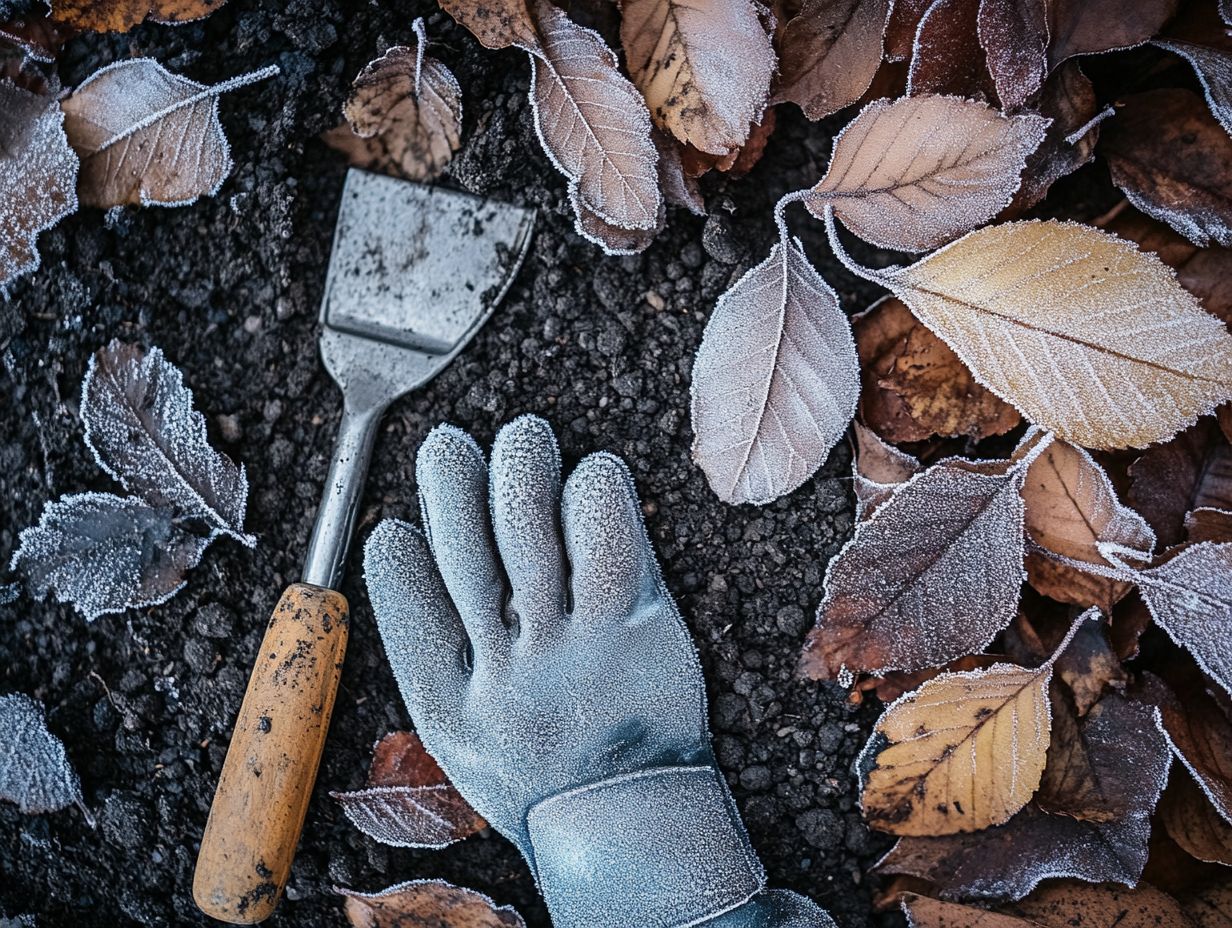
What are the top 5 soil myths that every cold-climate gardener should know?
- 1. “Adding sand to soil will improve drainage in cold climates.” This is a common myth. In reality, adding sand to clay soil can make it more compact and difficult for plants to grow.
- 2. “Composting doesn’t work in cold climates.” Contrary to popular belief, composting can still be successful in cold climates. The cold temperatures can help slow down the decomposition process and preserve nutrients in the compost.
- 3. “Winter is a good time to fertilize plants in cold climates.” Fertilizing during the winter can cause more harm than good. Most plants are dormant and won’t absorb the nutrients, leading to potential fertilizer burn and wasted resources.
- 4. “Mulching is not necessary in cold climates.” Mulching is just as important in cold climates as it is in warmer ones. It helps insulate the soil and protect plant roots from extreme temperature changes.
- 5. “Watering in freezing temperatures will kill plants.” While watering plants in freezing temperatures can cause harm, it s not always fatal. Water early in the day when temperatures are above freezing and allow the water to soak in before temperatures drop.
Why is it important for cold-climate gardeners to know these soil myths?
Being aware of these cold-climate soil myths can help gardeners avoid making common mistakes that could harm their plants and hinder their gardening success. Knowing the truth enables gardeners to make informed decisions and properly care for their soil and plants.
What are some other common myths about soil in cold climates?
Some other myths include the belief that tilling is necessary for healthy soil. In reality, tilling can disrupt the natural structure of soil. Additionally, many plants can thrive in partial shade, and some weeds can benefit the soil and other plants, as discussed in gardening myths: winter edition.
How can I improve my soil in a cold climate?
One way to improve soil in a cold climate is by adding organic matter, such as compost or aged manure. For more detailed advice, consider these soil preparation tips, which will help enhance soil structure, nutrient levels, and water retention.
Using cover crops during the winter can also improve soil health and prevent erosion.
Are there any specific plants that do well in cold climates?
Yes, many plants are well-suited for cold climates, including certain vegetables, fruits, and flowers. Examples include kale, broccoli, apples, and pansies. Dive in and discover which hardy plants will flourish in your garden!
How often should I test my soil in a cold climate?
It’s recommended to test your soil every 3-5 years or whenever you notice a decline in plant health. This helps identify nutrient deficiencies or imbalances and allows for necessary adjustments.
In cold climates, it s important to test for pH levels, as harsh weather can affect soil acidity.
Call to Action: Conduct your own soil pH tests and experiment with different plants suited for cold climates to enhance your gardening success! For effective strategies, check out cold-climate pest management myths debunked!

